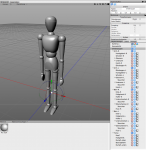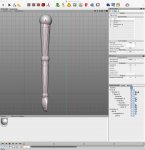Maybe I try something impossible with Cheetah3D. I didn’t work with bones and IK yet but made already some works in 3D.
My project is a manikin like artists use it. It is made of single elements (arm head and so on). I don’t get how to structure and connect these.
(See screenshots). Reading manual and helpfiles did not work for me - unfortunately ...
Can someone help, please?
Cheetah3D 6.3.2/macOS10.13
My project is a manikin like artists use it. It is made of single elements (arm head and so on). I don’t get how to structure and connect these.
(See screenshots). Reading manual and helpfiles did not work for me - unfortunately ...
Can someone help, please?
Cheetah3D 6.3.2/macOS10.13



